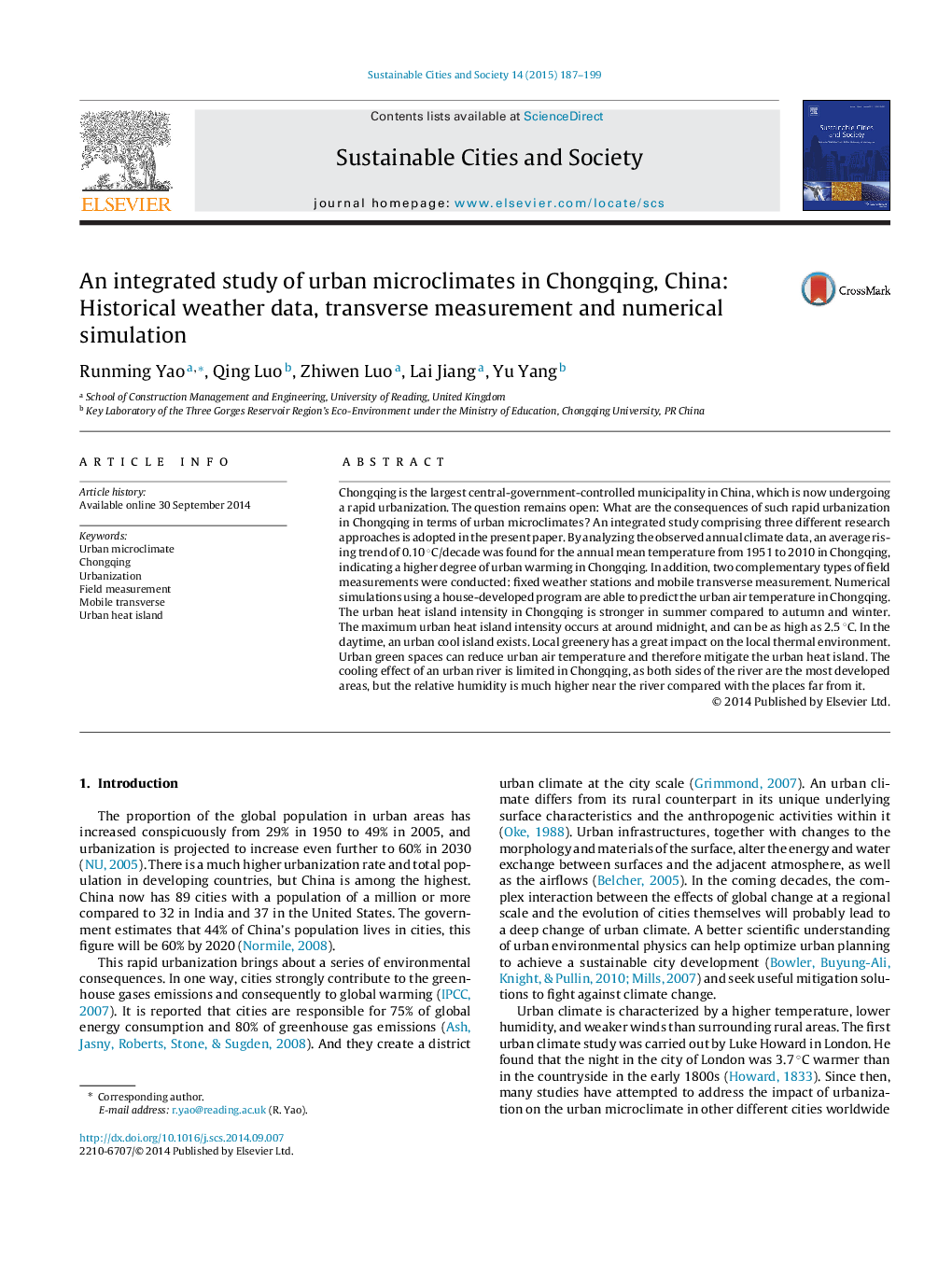| Article ID | Journal | Published Year | Pages | File Type |
|---|---|---|---|---|
| 6776572 | Sustainable Cities and Society | 2015 | 13 Pages |
Abstract
Chongqing is the largest central-government-controlled municipality in China, which is now undergoing a rapid urbanization. The question remains open: What are the consequences of such rapid urbanization in Chongqing in terms of urban microclimates? An integrated study comprising three different research approaches is adopted in the present paper. By analyzing the observed annual climate data, an average rising trend of 0.10 °C/decade was found for the annual mean temperature from 1951 to 2010 in Chongqing, indicating a higher degree of urban warming in Chongqing. In addition, two complementary types of field measurements were conducted: fixed weather stations and mobile transverse measurement. Numerical simulations using a house-developed program are able to predict the urban air temperature in Chongqing. The urban heat island intensity in Chongqing is stronger in summer compared to autumn and winter. The maximum urban heat island intensity occurs at around midnight, and can be as high as 2.5 °C. In the daytime, an urban cool island exists. Local greenery has a great impact on the local thermal environment. Urban green spaces can reduce urban air temperature and therefore mitigate the urban heat island. The cooling effect of an urban river is limited in Chongqing, as both sides of the river are the most developed areas, but the relative humidity is much higher near the river compared with the places far from it.
Related Topics
Physical Sciences and Engineering
Energy
Renewable Energy, Sustainability and the Environment
Authors
Runming Yao, Qing Luo, Zhiwen Luo, Lai Jiang, Yu Yang,
